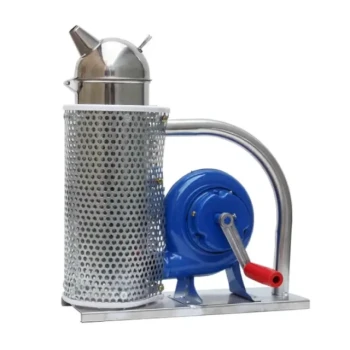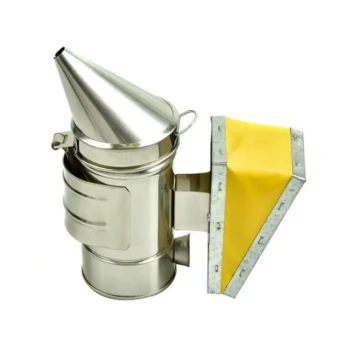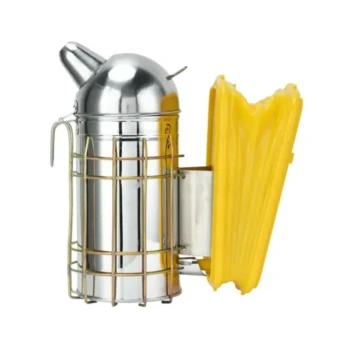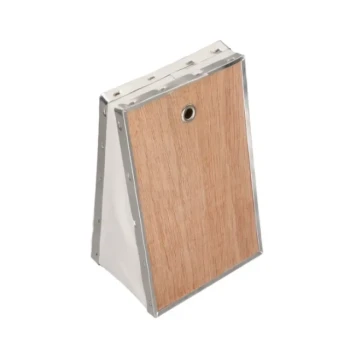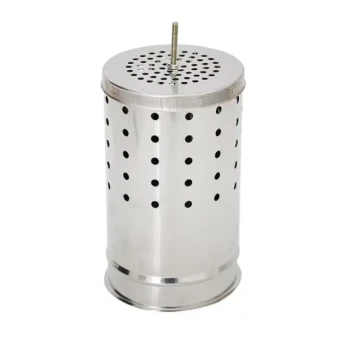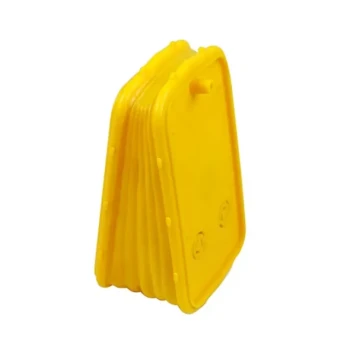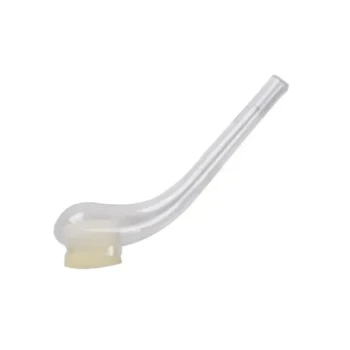Yes, smoke can be harmful to bees if used improperly. Excessive, hot, or poorly managed smoke can agitate and confuse a colony, and its residue can even be absorbed by the beeswax, affecting the taste of the honey. However, when applied correctly and in moderation, cool white smoke is a safe and essential tool that is not considered harmful to the bees.
The purpose of a smoker is not to sedate or harm bees, but to temporarily interrupt their defensive communication and trigger a natural, instinctual response. The key to its safe use lies in understanding these mechanisms and applying smoke with moderation and clear intent.
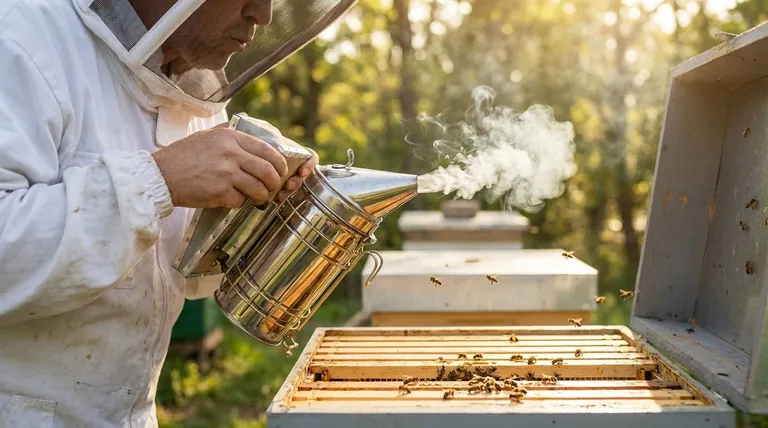
How Smoke Actually Affects Bee Behavior
A bee smoker is a tool for communication and misdirection. Its effectiveness comes from tapping into two of the colony's deeply ingrained behaviors.
Interrupting the Alarm System
Bees communicate danger primarily through alarm pheromones. When a bee feels threatened or stings, it releases these chemical signals, alerting other guard bees to a specific threat and location, which can trigger a coordinated defensive attack.
Smoke effectively masks these pheromones. The particles in the smoke bind to the bees' antennae, temporarily blocking their ability to receive the alarm signals. This prevents panic from spreading throughout the hive, keeping the colony in a calmer, less defensive state.
Triggering a Primal Instinct
Smoke also triggers a far more ancient instinct: the response to a wildfire. When bees detect smoke, their immediate priority shifts from hive defense to survival and potential relocation.
Their instinct tells them to prepare for abandoning the hive. To do this, they fly to the honeycomb and begin to gorge on honey, loading up on energy reserves for the potential journey. A bee with a full abdomen is physically less able to flex its body to sting and is generally more docile and preoccupied.
Understanding the Risks and Trade-offs
While essential, a smoker is not a tool to be used without consideration. Improper use can create the very problems you are trying to avoid.
The Danger of "Too Much" Smoke
Applying excessive smoke will not make the bees calmer. Instead, it can overwhelm and confuse the colony, leading to agitation and anger rather than placidity. The goal is a gentle waft, not a dense cloud.
The Impact on Honey and Wax
Beeswax is porous and can absorb aromas from its environment. Heavy, continuous smoking can cause the wax—and by extension, the honey stored within it—to take on a smoky flavor, which is undesirable.
The Need for "Cool" Smoke
The smoke should always be cool and white, not hot and gray. Hot smoke can physically harm the bees, burning their delicate wings or bodies. This is controlled by using the right fuel and proper smoker technique, ensuring you are puffing gentle bellows of smoke, not streams of hot air or embers.
Making the Right Choice for Your Inspection
Your goal dictates how you should apply smoke. The key is to be deliberate and observant, using the smoker as a precision tool rather than a blunt instrument.
- If your primary focus is a calm, routine inspection: Use minimal smoke at the entrance and under the lid before you begin, wait a minute, and then apply small, gentle puffs only when you see bees becoming agitated or defensive.
- If your primary focus is colony health and honey purity: Always ensure your smoker is producing cool, white smoke and use it sparingly to prevent stressing the bees or contaminating the wax and honey.
Ultimately, using a smoker effectively is about finesse, not force, ensuring the well-being of the colony while you work.
Summary Table:
| Aspect | Harmful (If Done Wrong) | Safe & Effective (If Done Right) |
|---|---|---|
| Smoke Quantity | Excessive, overwhelming puffs | Minimal, gentle puffs as needed |
| Smoke Quality | Hot, gray smoke with embers | Cool, thick white smoke |
| Bee Behavior | Agitation, confusion, defensive stinging | Calmness, gorging on honey, docility |
| Impact on Hive | Stress, potential harm to bees | Temporary disruption of alarm pheromones |
| Honey & Wax | Can absorb smoky flavor, reducing quality | No negative impact on taste or purity |
Ensure the Health of Your Hive with the Right Equipment
Proper beekeeping starts with reliable, high-quality tools. HONESTBEE supplies commercial apiaries and beekeeping equipment distributors with the professional-grade smokers and protective gear needed to manage hives safely and effectively.
We help you:
- Minimize Hive Stress: Use equipment designed for optimal cool smoke production.
- Protect Your Investment: Ensure honey quality and colony health with the right tools.
- Work Efficiently: Durable, well-designed gear makes inspections smoother and safer.
Ready to equip your operation with the best? Contact HONESTBEE today for wholesale inquiries on smokers, veils, suits, and other essential beekeeping supplies.
Visual Guide
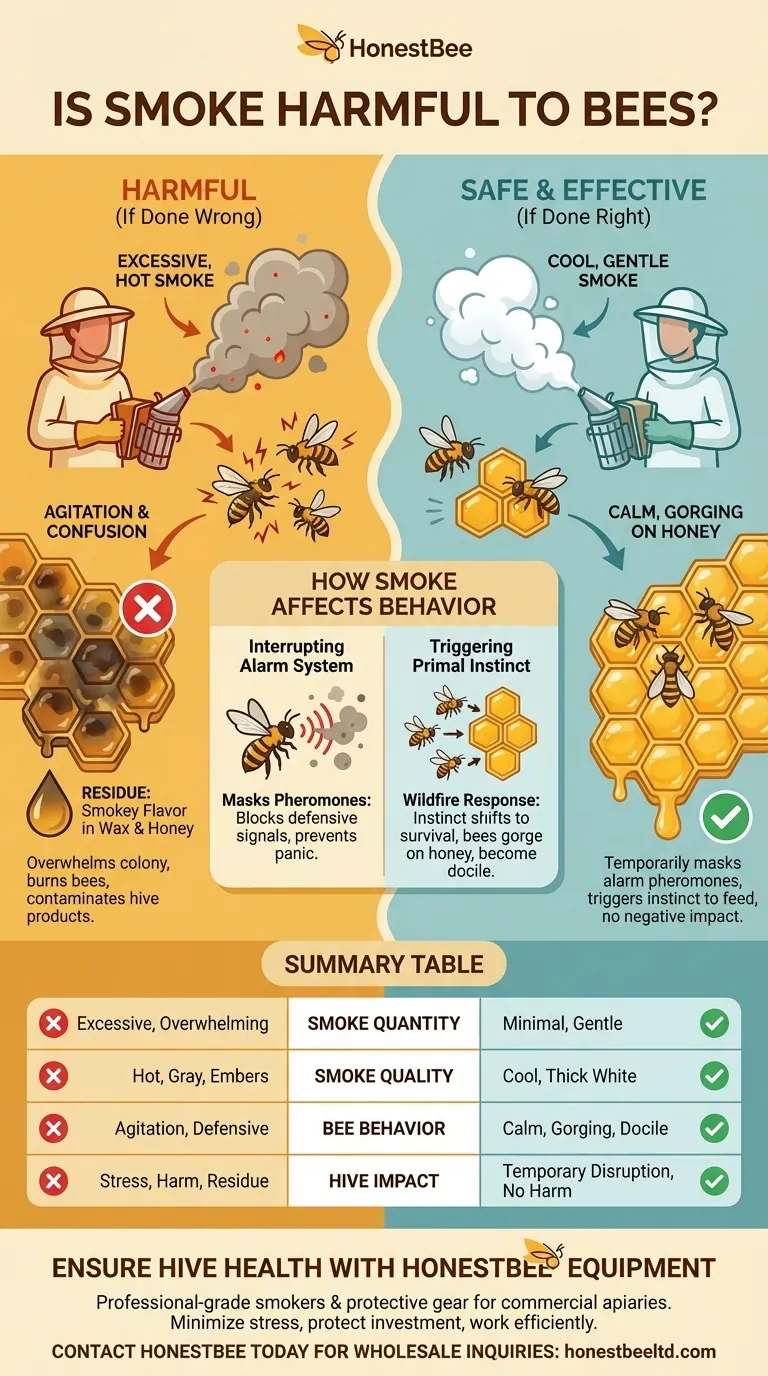
Related Products
- European Stainless Steel Bee Smoker for Honey Bee Hive
- Stainless Steel Honey Bee Smoker Hive and Honeycomb Smoker for Beekeeping
- Economy Galvanized Beekeeping Honey Bee Smoker for Wholesale
- Premium Traditional Copper Bee Smoker with Bellows
- Electric Bee Smoker European Style Bee Hive Smoker for Beekeeping
People Also Ask
- What are the differences between stainless steel and galvanized steel bee smokers? Choose the Right Smoker for Your Apiary
- How does a smoker help during hive inspections? The Key to Calm, Safe Beekeeping
- What are the advantages of a high-quality bee smoker? Achieve Calm, Confident Hive Management
- What are the features of a recommended bee smoker? A Guide to Safety, Durability & Performance
- What are the benefits of cleaning a bee smoker? Ensure Hive Safety and Bee Health







